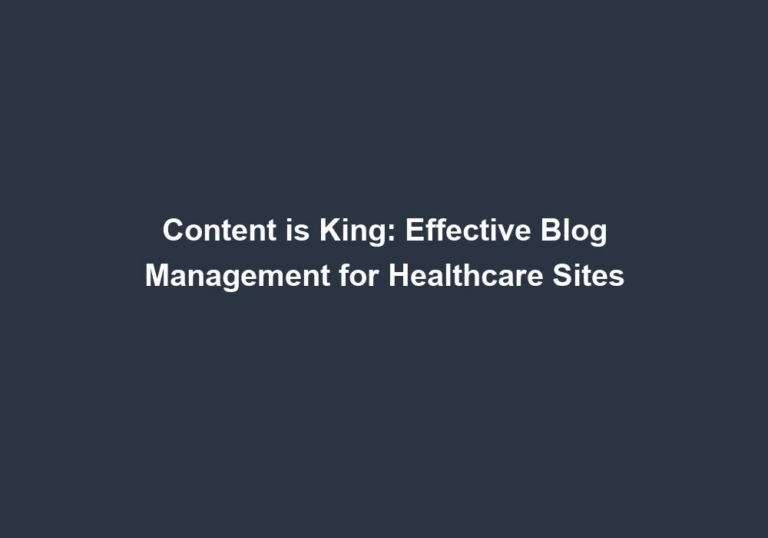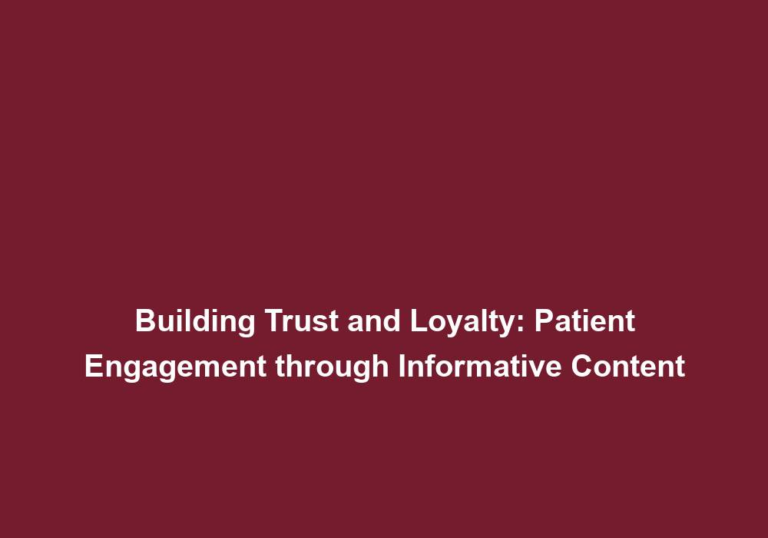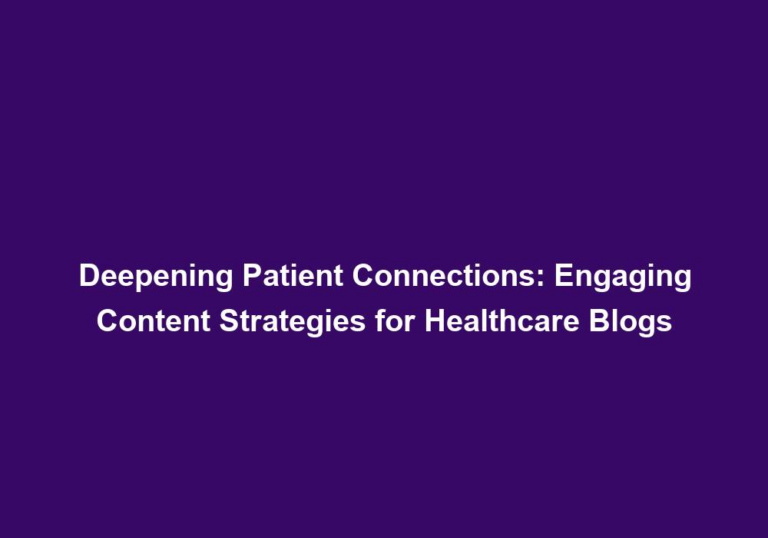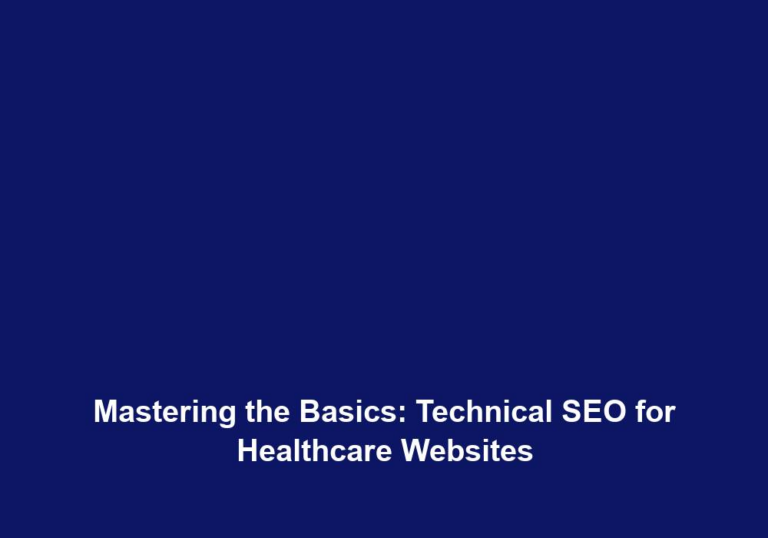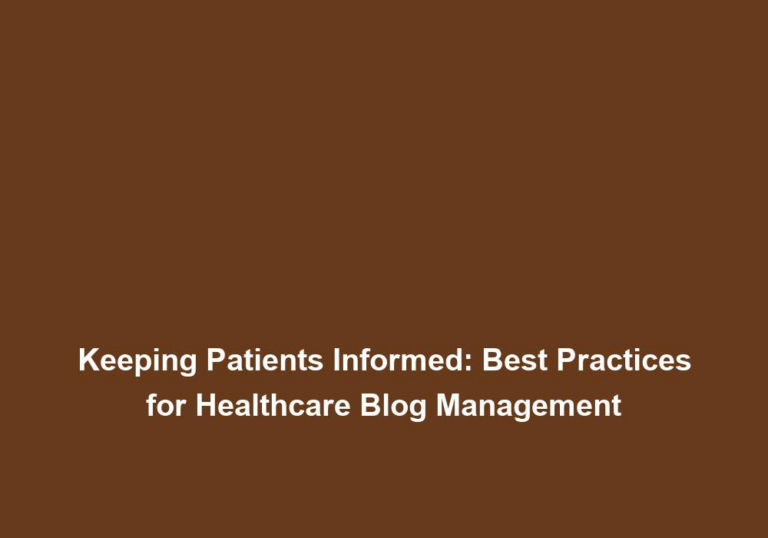Filling Your Content Calendar: Medical Blog Post Ideas for Every Month
As a medical content writer, it is crucial to have a well-planned content calendar that caters to the needs and interests of your target audience. By providing valuable and informative blog posts every month, you can establish yourself as an authoritative source in the medical industry. In this article, we will explore a variety of medical blog post ideas for each month of the year, ensuring that your content calendar remains consistently engaging and relevant.
January: New Year, New Health Goals
- Setting Realistic Resolutions: Guide your readers on how to set achievable health goals for the upcoming year. Provide tips on creating SMART (Specific, Measurable, Achievable, Relevant, Time-bound) goals and offer suggestions for healthy lifestyle changes.
- Discuss the importance of setting realistic health goals and avoiding unrealistic expectations.
- Provide examples of specific health goals that readers can consider, such as losing a certain amount of weight or incorporating exercise into their daily routine.
- Explain the benefits of measurable goals and how tracking progress can help motivate readers.
- Offer suggestions for achievable lifestyle changes, such as starting with small steps and gradually increasing intensity or duration.
- Winter Safety Precautions: Share information on staying safe during the winter months. Discuss common winter-related health issues, such as frostbite and seasonal affective disorder (SAD). Offer practical advice on how to protect oneself from these hazards.
- Explain the risks associated with cold weather conditions, such as frostbite and hypothermia.
- Provide tips on how to dress appropriately for winter weather to prevent cold-related injuries.
- Discuss the symptoms and management of seasonal affective disorder (SAD) and offer suggestions for coping strategies.
- Highlight the importance of staying active during winter months and provide ideas for indoor exercises or activities.
February: Heart Health Awareness Month
- Preventing Heart Disease: Educate your readers about the risk factors for heart disease and provide tips on prevention. Discuss the importance of regular exercise, a balanced diet, and stress management techniques.
- Explain the major risk factors for heart disease, such as high blood pressure, high cholesterol, smoking, and obesity.
- Provide guidance on how to reduce these risk factors through lifestyle changes, such as engaging in regular physical activity.
- Offer specific exercise recommendations, such as aerobic exercises, strength training, and flexibility exercises.
- Discuss the role of a balanced diet in maintaining heart health, including recommendations for foods that promote cardiovascular health.
- Address the importance of stress management techniques, such as relaxation exercises, meditation, and seeking social support.
- Women and Heart Health: Highlight the unique cardiac concerns faced by women. Discuss topics like heart disease symptoms, heart attack risks, and the importance of regular check-ups for early detection.
- Explain the gender-specific differences in heart disease symptoms and risk factors for women.
- Provide information on common symptoms of a heart attack in women, which may differ from those experienced by men.
- Highlight the importance of regular check-ups and screenings for early detection of heart disease in women.
- Discuss the role of hormonal factors, such as menopause, in increasing the risk of heart disease in women.
March: National Nutrition Month
- Balanced Diet Tips: Provide nutrition advice on maintaining a well-balanced diet. Discuss the importance of consuming fruits, vegetables, whole grains, lean proteins, and healthy fats.
- Explain the benefits of a balanced diet in promoting overall health and preventing chronic diseases.
- Provide specific recommendations for each food group, such as the number of servings of fruits and vegetables per day.
- Discuss the importance of portion control and mindful eating in maintaining a balanced diet.
- Offer suggestions for incorporating healthy fats, such as avocados and nuts, into daily meals.
- Meal Planning: Guide your readers on how to plan nutritious meals and snacks. Share meal prep ideas, grocery shopping tips, and healthy recipe recommendations to support their nutrition goals.
- Explain the benefits of meal planning in ensuring a nutritious and balanced diet.
- Provide step-by-step instructions on how to plan meals for the week, including creating a grocery list and prepping ingredients in advance.
- Offer healthy recipe recommendations that are easy to prepare and incorporate a variety of nutrients.
- Discuss the importance of mindful eating and listening to hunger and fullness cues.
April: Stress Awareness Month
- Understanding Stress: Discuss the impact of stress on overall health. Explain the difference between acute and chronic stress and how it affects the body. Offer practical stress management techniques such as mindfulness, exercise, and relaxation techniques.
- Define stress and its physiological and psychological effects on the body.
- Differentiate between acute stress, which is short-term, and chronic stress, which is long-term.
- Discuss the negative consequences of chronic stress on mental and physical health.
- Provide evidence-based stress management techniques, such as mindfulness meditation, deep breathing exercises, and regular physical activity.
- Work-Life Balance: Address the importance of achieving a healthy work-life balance to reduce stress levels. Share strategies for managing stress at work and maintaining personal well-being.
- Explain the concept of work-life balance and its significance in preventing burnout and reducing stress.
- Provide tips on setting boundaries between work and personal life to avoid excessive stress.
- Discuss the importance of self-care activities, such as hobbies, exercise, and spending time with loved ones.
- Offer suggestions for stress management techniques specifically tailored to the workplace, such as time management and prioritization.
May: Mental Health Awareness Month
- Mental Health Stigma: Shed light on the stigma surrounding mental health and the importance of breaking down barriers. Offer resources for seeking help and share stories of individuals who have overcome mental health challenges.
- Discuss the negative impact of mental health stigma on individuals seeking help and accessing appropriate treatment.
- Provide resources for readers to learn more about mental health, including helplines and support groups.
- Share inspiring stories of individuals who have overcome mental health challenges to reduce stigma and offer hope.
- Encourage open discussions about mental health and promote the importance of seeking professional help when needed.
- Self-Care Tips: Provide practical self-care strategies for maintaining mental well-being. Discuss activities such as journaling, practicing gratitude, engaging in hobbies, and seeking social support.
- Explain the concept of self-care and its role in promoting mental well-being.
- Offer a variety of self-care activities that readers can incorporate into their daily routines, such as journaling or engaging in creative hobbies.
- Discuss the benefits of practicing gratitude and offer suggestions for gratitude exercises.
- Highlight the importance of social support and maintaining healthy relationships for mental health.
June: Men’s Health Month
- Preventive Screenings: Encourage men to prioritize their health by discussing the importance of regular check-ups and screenings. Highlight common health concerns among men, such as prostate cancer and cardiovascular disease.
- Explain the significance of preventive screenings in detecting health conditions early and improving outcomes.
- Provide information on specific screenings that men should consider, such as prostate cancer screenings and cholesterol tests.
- Discuss the risk factors for common health conditions among men, including lifestyle factors and genetic predisposition.
- Encourage men to schedule regular check-ups with their healthcare providers and address any concerns or symptoms promptly.
- Healthy Lifestyle Choices: Provide tips for men on how to make healthier choices in their daily lives. Discuss the benefits of exercise, a balanced diet, and stress management techniques specifically tailored to men’s health.
- Discuss the importance of regular exercise in maintaining overall health and reducing the risk of chronic diseases.
- Provide guidelines for exercise recommendations, such as the amount of physical activity per week.
- Offer suggestions for incorporating physical activity into daily routines, such as walking or cycling.
- Discuss the role of a balanced diet and specific nutrients in promoting men’s health, such as foods rich in antioxidants and omega-3 fatty acids.
July: Skin Cancer Awareness Month
- Sun Protection Tips: Educate your readers on the importance of sun protection to prevent skin cancer. Discuss the significance of sunscreen, protective clothing, and seeking shade during peak sun hours.
- Explain the harmful effects of UV radiation on the skin and the increased risk of skin cancer.
- Provide guidelines for proper sunscreen application, including the recommended SPF and frequency of reapplication.
- Discuss the importance of wearing protective clothing, such as wide-brimmed hats and long-sleeved shirts, to shield the skin from the sun.
- Encourage readers to seek shade during peak sun hours and avoid excessive sun exposure.
- Skin Cancer Detection: Share information on how to detect early signs of skin cancer. Discuss the ABCDE rule for identifying suspicious moles and emphasize the importance of regular skin self-examinations.
- Explain the ABCDE rule for identifying potential signs of skin cancer, including asymmetry, irregular borders, color variation, diameter, and evolution.
- Provide step-by-step instructions for performing a skin self-examination and encourage readers to regularly check their skin for any changes or abnormalities.
- Highlight the importance of seeking medical attention if any suspicious moles or skin changes are detected.
- Offer resources for readers to learn more about skin cancer detection and prevention, such as dermatology clinics or online educational materials.
August: Back-to-School Health
- Immunizations for Children: Provide parents with an overview of the necessary immunizations for their children before heading back to school. Explain the importance of vaccines and address common concerns and misconceptions.
- Highlight the significance of immunizations in preventing the spread of infectious diseases and protecting children’s health.
- Provide a comprehensive list of recommended vaccines for different age groups and discuss their benefits and potential side effects.
- Address common concerns and misconceptions about vaccines, such as their safety and efficacy.
- Encourage parents to consult with healthcare professionals to ensure their children are up-to-date with immunizations.
- Healthy Lunchbox Ideas: Offer creative and nutritious lunchbox ideas to promote children’s health. Include suggestions for incorporating fruits, vegetables, whole grains, and protein sources into their meals.
- Provide a variety of lunchbox ideas that are both appealing to children and meet their nutritional needs.
- Include suggestions for incorporating different food groups, such as fruits, vegetables, whole grains, and lean proteins.
- Offer alternatives to processed snacks and sugary beverages, such as homemade granola bars or flavored water.
- Provide tips on meal prepping and involving children in the preparation of their lunchboxes to promote healthy eating habits.
September: Healthy Aging Month
- Aging Gracefully: Discuss the various aspects of healthy aging and offer tips for maintaining physical, mental, and emotional well-being as individuals age. Address topics such as exercise, nutrition, cognitive stimulation, and social engagement.
- Explain the importance of maintaining a healthy lifestyle as individuals age to promote overall well-being.
- Provide recommendations for age-appropriate exercises that focus on strength, flexibility, and balance.
- Discuss the role of nutrition in healthy aging, including the importance of a balanced diet and adequate hydration.
- Highlight the benefits of cognitive stimulation, such as puzzles or learning new skills, in maintaining mental acuity.
- Emphasize the significance of social engagement and maintaining meaningful relationships for emotional well-being.
- Common Age-Related Conditions: Educate your readers about common health concerns that arise with age, such as osteoporosis, arthritis, and cognitive decline. Provide guidance on prevention, early detection, and management.
- Discuss the risk factors and potential consequences of common age-related conditions, such as osteoporosis, arthritis, and cognitive decline.
- Provide strategies for preventing or reducing the risk of these conditions through lifestyle modifications, such as exercise and a balanced diet.
- Discuss the importance of early detection through regular screenings and medical check-ups.
- Offer recommendations for managing and coping with these conditions, such as physical therapy for arthritis or cognitive exercises for cognitive decline.
October: Breast Cancer Awareness Month
- Breast Cancer Prevention: Provide valuable information on reducing the risk of breast cancer. Discuss lifestyle choices, regular screenings, and genetic factors that play a role in breast cancer development.
- Discuss the importance of breast cancer prevention through lifestyle choices, such as maintaining a healthy weight and exercising regularly.
- Provide information on the benefits of regular breast cancer screenings, such as mammograms and clinical breast exams.
- Discuss genetic factors that increase the risk of breast cancer, such as BRCA gene mutations, and the importance of genetic counseling and testing.
- Offer resources for readers to learn more about breast cancer prevention and early detection, such as support organizations or online educational materials.
- Supporting Breast Cancer Patients: Offer guidance and resources for individuals who have been diagnosed with breast cancer or are supporting a loved one through their journey. Discuss emotional support, treatment options, and survivorship.
- Provide tips for supporting breast cancer patients emotionally, such as active listening and creating a supportive environment.
- Discuss various treatment options for breast cancer, including surgery, radiation therapy, chemotherapy, and targeted therapy.
- Address common concerns and side effects associated with breast cancer treatment and offer coping strategies.
- Highlight the


